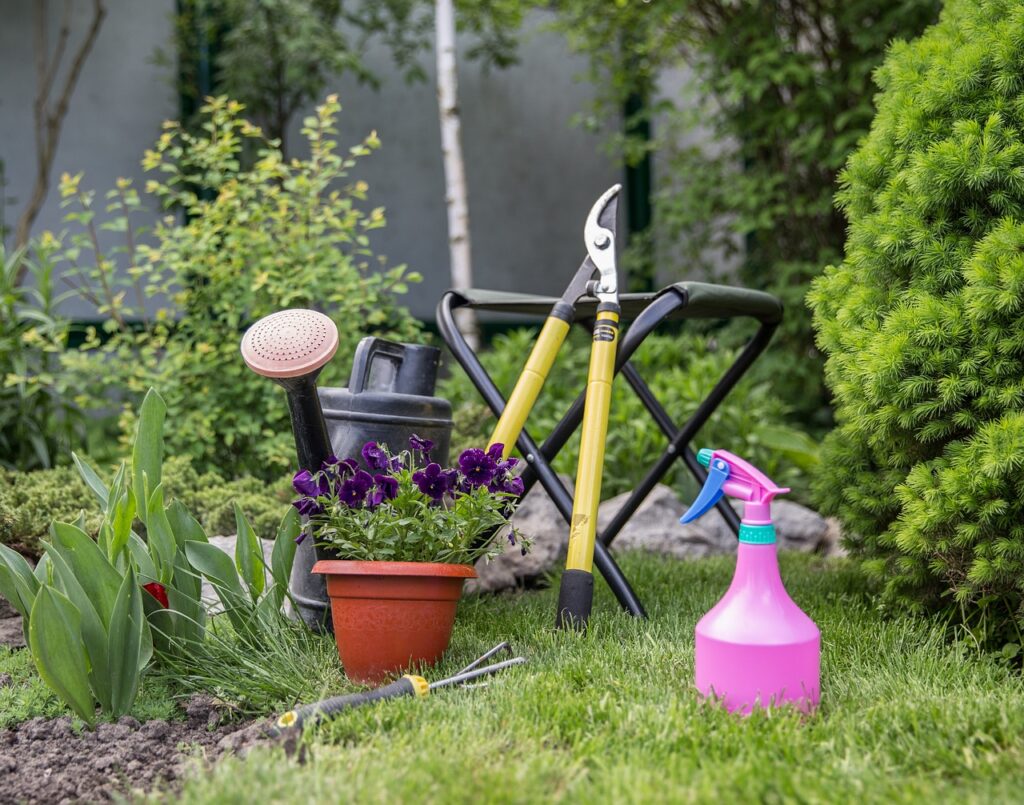There’s something magical about a garden. It’s a place where nature whispers and life flourishes, a space that invites us to dip our hands into the soil and connect with the world in a way that’s both ancient and utterly new. This is the realm of adaptive gardening, a practice that has transformed not just our garden but our lives, especially in the shared moments between me and my son as we pick strawberries from our adaptive oasis.
“The garden suggests there might be a place where we can meet nature halfway.” These words by Michael Pollan encapsulate the spirit of adaptive gardening. It’s about making small, thoughtful changes to our gardening habits to accommodate our physical needs while being mindful of the natural world. The essence of adaptive gardening is encapsulated in the motto, “Garden smarter, not harder.” This philosophy has been our guiding light as we’ve journeyed through creating our adaptive garden, discovering the joys and challenges it brings.
The Creativity of Adaptive Gardening
Adaptive gardening is born from necessity but thrives on creativity. For many, the introduction to adaptive gardening comes through modifications like raised beds or container gardening, especially when physical limitations such as arthritis come into play. These methods not only make gardening more accessible but also open up a world of possibilities for plant cultivation and enjoyment.
Our adventure in adaptive gardening has led us to explore various types of containers, particularly those made from cloth or fabric. These soft-sided bags not only create a nurturing environment for the plants, allowing roots to breathe and thrive, but they also introduce a new layer of consideration in gardening—how to water them efficiently and ensure they’re placed for optimal growth and enjoyment.
Customizing Tools for Comfort
The journey doesn’t stop at containers. Adapting tools and methods to suit one’s physical needs and the garden’s requirements is a continuous process. We’ve found joy in customizing tool handles with PVC pipes for a more comfortable grip and limiting the strain on our bodies. It’s a process that encourages ingenuity and a deeper understanding of how our bodies interact with the tools and the earth.
One of the most profound shifts in our adaptive gardening adventure has been the move from annuals to perennials, especially native plants. This decision not only reduces the physical demand of gardening but also contributes to a healthier ecosystem, attracting beneficial insects and birds and adding year-round interest to our garden. It’s a delightful balance of personal enjoyment and environmental stewardship.
Planning for Accessibility
Creating a garden that accommodates our future selves and the changing environment is an act of hope and imagination. It involves thinking ahead about the physical limitations we might face and the kind of world we want to cultivate. This forward-thinking approach has led us to replace lawn areas with shrubs and to plan our garden with accessibility in mind, ensuring that every path and plant is within easy reach.
Our adaptive gardening journey has been enriched by the wisdom of others who share this passion. Misilla, an organic gardener and mother living in the Pacific Northwest, embodies the spirit of adaptive gardening. Through her, we’ve learned the importance of soil health, the joy of gardening with children, and the value of starting small and dreaming big. Misilla’s use of C-BITEs for creating structures that protect and support her plants has inspired us to experiment with our garden layout and find new ways to nurture our plants.
The Joy of Gardening with My Son
One of the greatest joys of adaptive gardening is the ability to share it with my son. Together, we’ve learned that gardening is not just about growing plants; it’s about growing together. It’s about the excitement of planting a seed, the anticipation of the first sprout, and the sheer delight of picking a ripe strawberry from our garden. It’s a lesson in patience, care, and the rewards of hard work.

Adaptive gardening has also taught us the importance of being mindful of our needs and limitations. Packing a gardening bag with essentials like sunscreen, water, and a ruler for measuring plant growth helps us stay organized and focused on our gardening tasks without overexerting ourselves. It’s a reminder that gardening is as much about caring for ourselves as it is about caring for our plants.
A Journey of Learning and Growing
As we look to the future of our adaptive garden, we’re reminded that gardening is a journey, not a destination. It’s a process of learning, adapting, and growing, both as individuals and as a community. Our adaptive garden is more than just a space for plants; it’s a space for connection, discovery, and joy.
Adaptive gardening is a testament to the resilience and creativity of the human spirit. It’s about meeting nature halfway, embracing our limitations as opportunities for innovation, and finding joy in the simple act of gardening alongside those we love. As we continue to explore and expand our adaptive garden, we do so with the knowledge that every plant we nurture, every tool we adapt, and every moment we share is a step towards a richer, more connected life. The journey is fraught with challenges, but the rewards—a garden that reflects our care, creativity, and connection with each other and the world—are immeasurably sweet, much like the strawberries we pick together in our own little piece of paradise.
Related posts:
GROW INSPIRED: MISILLA @LEARNTOGROW ON GARDENING WITH KIDS & GROWING ADVICE
Growing Strawberries, Tips From The Farm, & Home





